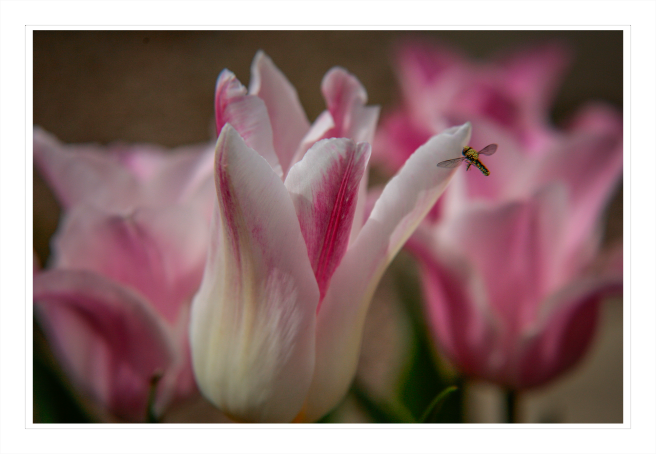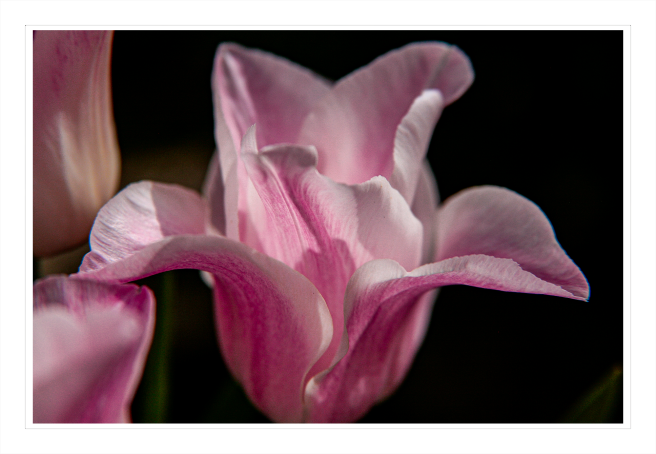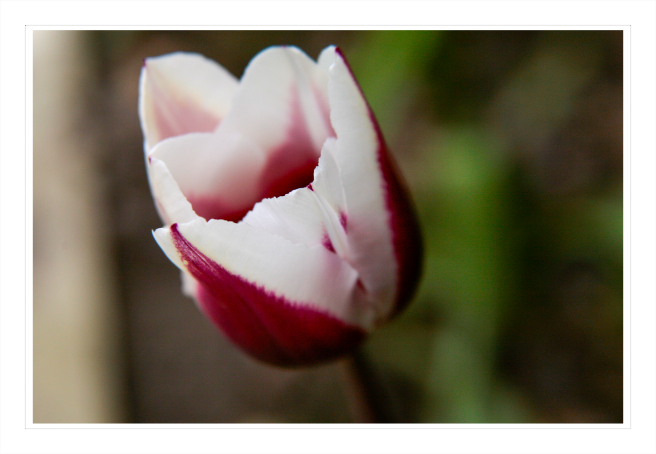
What are the odds that from a mixed colour pack of 25 lily-flowering tulip bulbs, the six I potted up are all shades of pink? They co-ordinate beautifully and are altogether stronger and far less slug damaged than the remainder which I planted in the west facing, boundary hedge border. Amongst those that emerged are orange, red stripe, and magenta-red varieties (?Tulip Doll’s Minuet) with just 3 of the same pinks.

The long-stemmed, slender blooms are tipped with pointed petals that curve slightly backwards in a form I regard as more elegant than most tulips and certainly suits the aesthetic of the Japanesque garden. And as I wrote in this post, tulips have their place in a modern Japanese style garden if only because:
” there are several tulip festivals in Japanese cities with thousands of blooms on show. [Given the Dutch influence in Japan since the 17th century as the only permissible trading partners, it is not surprising that Japan is big on tulips].


Aside from being eye-candy for gardeners, the tulips are popular with small hoverfly visitors to the accessible pollen centres.
Hover-flies (Syrphidae – whole family) – pollenivores. Unlike most non-bee flower-visitors, the hoverflies actually consume pollen. By consuming pollen the amount of pollen grains left for pollination becomes much less, but by spending the extra time to consume the pollen they visit more portions of the flower and more pollen ends up stuck to their face, chin and belly.[source]

Lily flowering Tulips are late spring bloomers and latterly, these rather miserable cool April days have prevented the blooms from going over too quickly so that is one compensation.

I’ll probably dig out the border planted bulbs to store until autumn and then grow in containers for next year. This six I’ll feed just as they are dying back to fatten the bulbs and probably plant annuals in the same pot. I already have some Cornflowers just waiting to be potted on – they too are mixed colours so I await the combinations with bated breath!
Note: I’m including bulbous and tuberous perennials within this ‘plants in brief’ category of annuals & biennials because they tend to be short lived. To help extend their life here is advice from J Parkers from which these tulips were purchased:
Sometimes, tulips can struggle to reappear after a few flowering seasons. This can happen for any number of reasons, like the soil is lacking in nutrients or they’re not reaching enough sun. To avoid this, you can simply lift and throw them away, or store them to plant again next autumn. If you prefer to keep your tulips in the ground but notice they’re struggling, re-nourish them with a tomato-based fertilizer while in bloom [source]
Details
Plant Size
| Mature Height | 55 cm |
|---|---|
| Mature Spread | 10 cm |
| Plant Spacing | 15 cm |
| Annual Growth | 55 cm |
Planting Notes
| Planting | Plant at approx 10cm deep. |
|---|---|
| Soil Type | Well drained garden soil |


